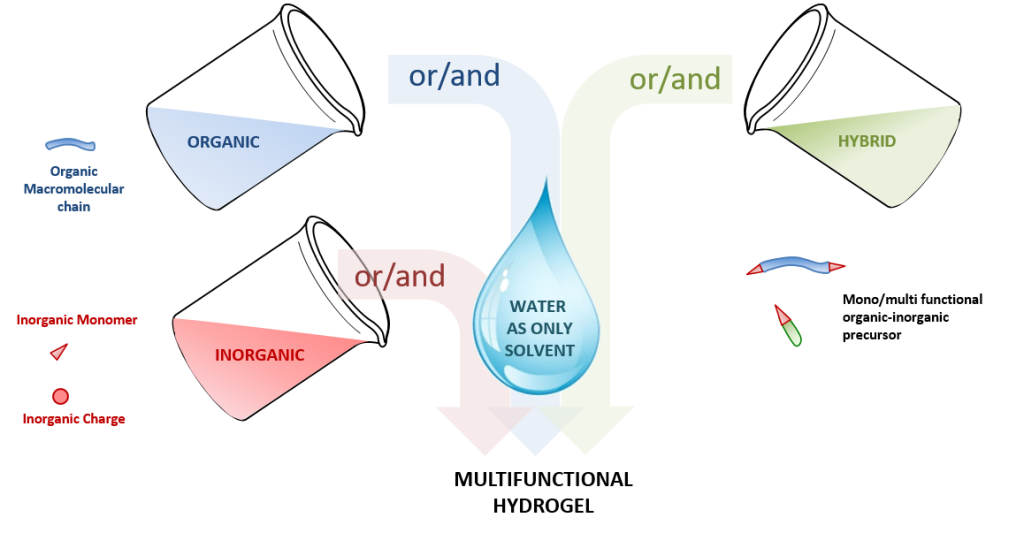J. Mater. Chem. B, 2018,6, 3434-3448, doi 10.1039/C8TB00456K
T
Abstract
As an intermediate state between liquid and solid materials, hydrogels display unique properties, opening a wide scope of applications, especially in the biomedical field. Organic hydrogels are composed of an organic network cross-linked via chemical or physical reticulation nodes. In contrast, hybrid hydrogels are defined by the coexistence of organic and inorganic moieties in water. Inorganic polymerization, i.e. the sol–gel process, is one of the main techniques leading to hybrid hydrogels. The chemoselectivity of this method proceeds through hydrolysis and condensation reactions of metal oxide moieties. In addition, the mild reaction conditions make this process very promising for the preparation of water-containing materials and their bio-applications.


